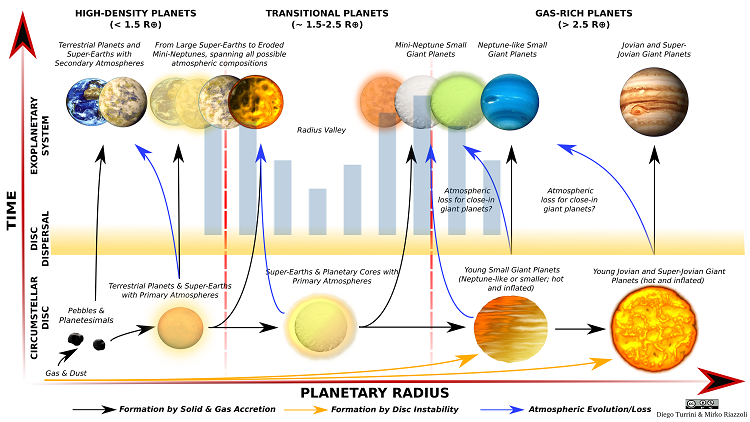
|
Résumé (for english version : click on the flag above) Les deux dernières décennies ont été les témoins d'une révolution dans notre compréhension des systèmes planétaires et de la façon dont notre Système Solaire s’insère dans le contexte plus général des exoplanètes. Plus de 3000 systèmes exoplanétaires ont été découverts, avec une grande variété de plus de 4000 exoplanètes. Si les recherches se sont d’abord focalisées sur les “Jupiter chauds” et les planètes de type terrestre, une surprise a été que la majorité des planètes détectées présentent un rayon entre la Terre et Neptune, d’un type non représenté dans notre Système Solaire. Ces planètes baptisées « transitionnelles » peuvent avoir soit un coeur rocheux entouré d’une enveloppe gazeuse d’hydrogène et d’hélium, ou bien contenir une enveloppe épaisse de glaces et fluides à dominance d’eau. Les spéculations sur leur nature, leur composition chimique, leur régime dynamique et l’histoire de leur formation sont nombreuses, mais les réponses sont actuellement peu nombreuses. Face à cette situation, les agences nationales et internationales ont déployé ou préparé des missions spatiales et des instruments dédiés à la caractérisation des exoplanètes et l’étude de leurs atmosphères. L’objectif est de permettre des avancées sur la compréhension de la formation et l’évolution planétaire, et comprendre pourquoi notre Système Solaire est si particulier. Il s’agit clairement d’un des sujets majeurs de la communauté astrophysique, et un guide prioritaire dans la conception de futurs instruments.
le zoo des exoplanètes
Situation nationale et internationale Les enjeux
|


